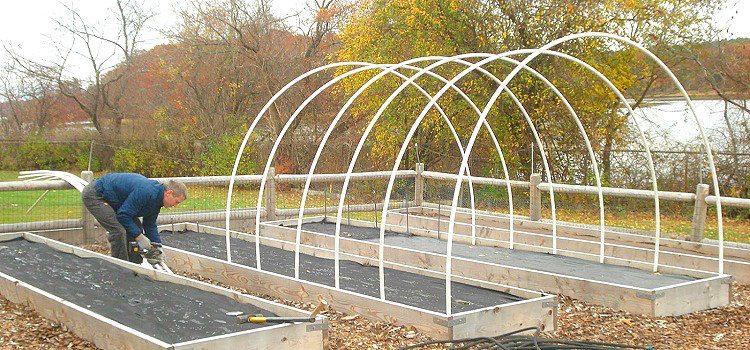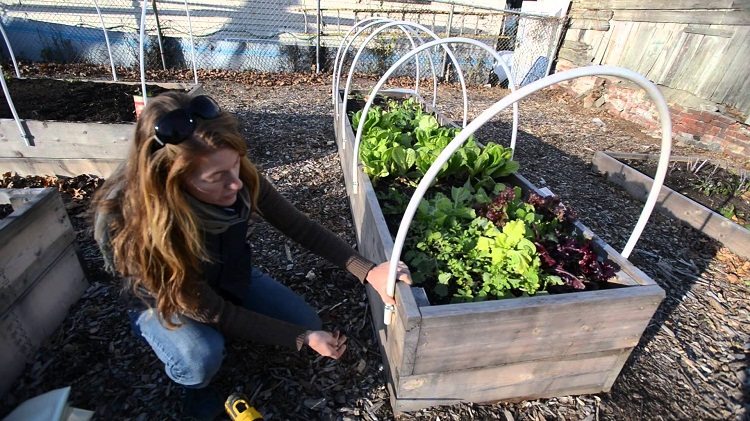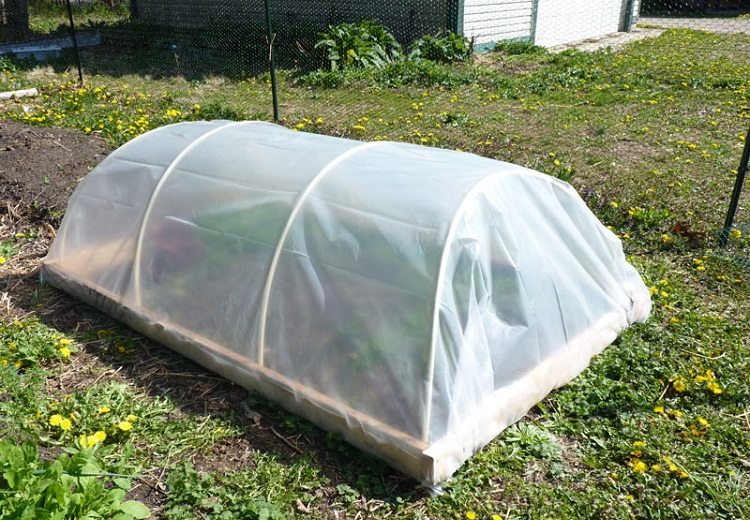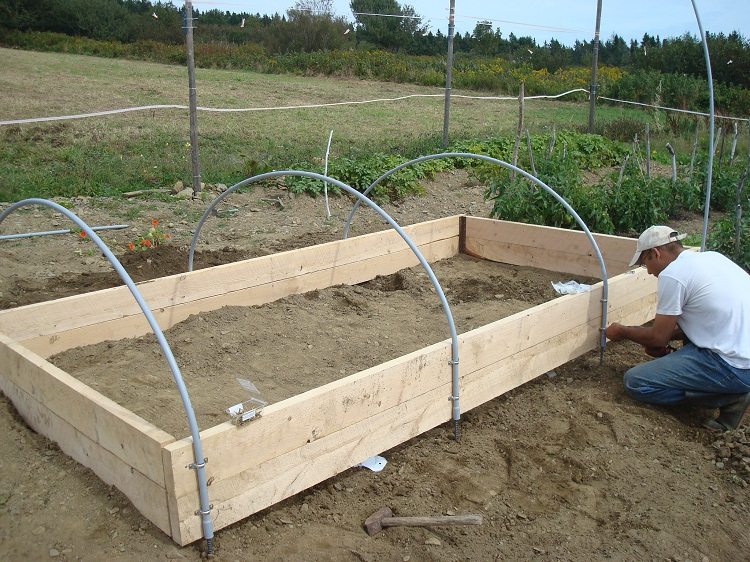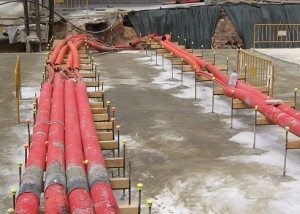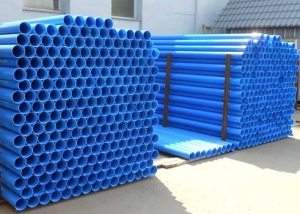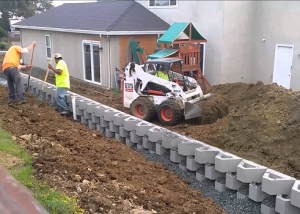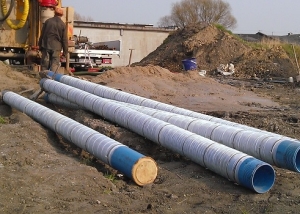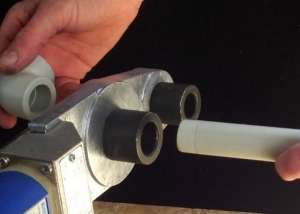For owners of personal plots, building a greenhouse is a great way to protect all heat-loving plants and crops from frost in the cold season. Ready-made frames for seasonal structures are available for sale, differing in size, material of manufacture and price. You can install a greenhouse or a greenhouse yourself from completely affordable means. Most often, for these purposes, inexpensive and light, but quite durable plastic pipes are used.
Content
Greenhouse made of PVC pipes: what are the benefits?
PVC pipes (short name of the material, full - polyvinyl chloride) appeared on the market relatively recently, but have already managed to gain popularity in many areas of production and households. As for the installation of household buildings, PVC pipes are gradually replacing aluminum and steel profile products.
PVC is great for creating a frame for a greenhouse with your own hands, because:
- The material is corrosion resistant. Polymer is the best material for structures designed for a long stay in the open. The metal profile will rust very quickly, and galvanized and stainless steel options will be too expensive for temporary construction.
- Wooden frames, no matter what quality wood they are made of, are exposed to the negative effects of rainfall over time. If rainfall often occurs in your area, a greenhouse with a wood frame can last only a few seasons.
- Light weight pipes simplify their transportation. You can even transfer a finished structure to a new place without resorting to its analysis.
- PVC does not deteriorate when the temperature drops. In the presence of fire sources adjacent to the structure, polyvinyl chloride pipes do not ignite. The combustion of the material ceases immediately as soon as the ignition site is eliminated.
- The strength of the material allows the structure to withstand powerful gusts of wind. Under the influence of precipitation and other natural factors, PVC does not lose its properties, and its structure does not undergo degradation.
- The frame will be ready for use immediately after assembly - no finishing or painting is required. A greenhouse or a greenhouse with a base of PVC pipes, assembled by yourself, looks quite aesthetically pleasing.
- Polyvinyl chloride is very flexible, which means that its processing does not take much time and labor. Even without the use of a special bender, the product can be given any kind of shape. If necessary, analysis of the structure also occurs very quickly.
The main advantage that makes PVC material so popular is the attractive price of products from this type of plastic. In terms of wear-resistant qualities, such pipes are not inferior to metal products, while the cost of a greenhouse or greenhouse will be several times lower.
Greenhouse design from plastic pipes
The choice of size and shape that a finished greenhouse made of PVC pipes will have depends on the individual requirements of the owner of the site: there will be no special restrictions during construction. A do-it-yourself greenhouse can be either stationary or collapsible. There is no point in installing a permanent frame if you plan to use a greenhouse only, for example, for growing seedlings in spring.
Helpful advice! It is important to remember that when increasing the dimensions of the structure, pipes of a larger diameter or with a thicker wall should be used.
The proposed designs of the greenhouse or the greenhouse from PVC pipes there are many. The most relevant of them:
- arched greenhouse;
- rectangular gable or gable greenhouses;
- greenhouse in the form of a dome (often used as a decorative structure;
- a greenhouse made in the form of an extension, i.e. the entrance to it will be located not from the side of the street, but from the house.
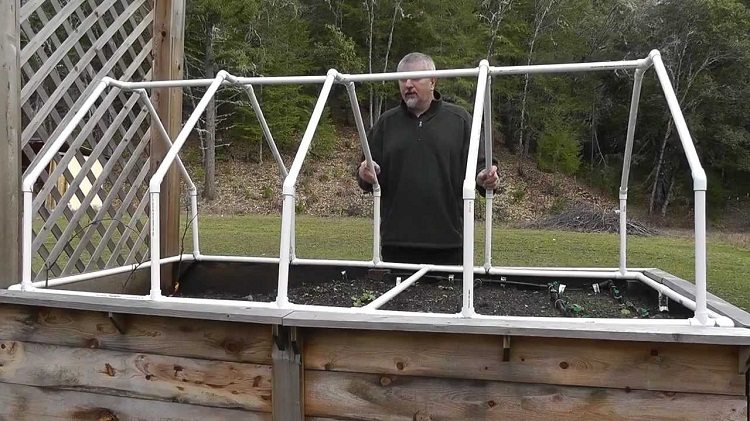
An assortment of pipes and connecting elements to them allow you to assemble complex structures - for example, with a gable roof
PVC pipes are commercially available in lengths of 2 to 7 meters. Longer products mean fewer connecting elements between segments.
Variants of the material for covering the greenhouse will also be different. Most often, polycarbonate sheets or a simple high-density polyethylene film are used. The film coating performs its functions perfectly in the autumn and spring months, and for too low temperatures it may not be enough. Greenhouses used all year round are usually covered with polycarbonate. In the summer months, this material protects plants from the negative effects of ultraviolet radiation, in the winter - from frost and snow.
An important issue will be the choice of location for a greenhouse or greenhouse. It is worth considering such factors:
- the greenhouse should not surround trees or other buildings. If the greenhouse is constantly in the shade, it will not be able to function normally;
- It will be useful to familiarize yourself with the weather calendar of your region in order to calculate the prevailing wind direction. This operation will help to reduce the heat loss of the greenhouse;
- the approach to the greenhouse should be free: the door of the greenhouse should coincide with the path.
How to make a greenhouse coated with a plastic film with your own hands
As an example, consider the simplest design of an arched greenhouse with a protective plastic film. The greenhouse will have doors and ventilation holes at the ends.
In order to assemble a greenhouse with your own hands with a canopy of plastic film, you will need this set of materials and parts:
- directly PVC pipes of the desired diameter;
- clamps for attaching a plastic film;
- tees of the corresponding diameter for connecting pipes, self-tapping screws for fastening, corner adapters;
- metal rods up to 0.8 m long.
First of all, it is necessary to level the place where the greenhouse will be located. At the same time, it is also impossible to over-compact the soil, since the soil structure will be disturbed.
Metal rods are driven into the soil around the entire perimeter of the future greenhouse. The burial depth should be at least 25 cm, if the soil is loose and loose, the depth can be increased. The rods will serve as a support for the PVC pipes, they will not allow the frame to fall with too strong wind gusts. The distance between the rods should not exceed 90 cm, again, it can be reduced in the presence of soil features.
After the base of the rods is ready, a frame of plastic arcs is assembled. Pipes are put on the rods parallel to each other, resulting in perfectly smooth arcs. Then a horizontal pipe is laid on the highest points of the arch structure and firmly fixed.The greater the length of the greenhouse from the pipes, the greater the number of horizontal segments required: they can also be installed from different sides on the sides. Doors and vents are installed last.
Similar arched structures can be purchased ready-made in the store with goods for the garden. They do not require the installation of a foundation, and all fasteners come complete with a set of pipes.
Covering the structure with a plastic film is preferably carried out at an average air temperature (at least 16-18 degrees), in order to avoid sagging material. Fastening with clamps allows you to weaken at any time or, conversely, increase the tension of the film. In the place where the film lays on the ground, you can install a weighting agent or dig the remaining film into the ground.
Do-it-yourself greenhouse with a wooden base
The arched structure can be installed not on open ground, but on a wooden box. This solution is more preferable for the state of plants.
Helpful advice! In order to prevent wooden boards from deteriorating from constant exposure to moisture, be sure to cover them with an antiseptic composition and a moisture-repellent varnish. For the foundation, it is worth taking only well-dried boards, preferably made of hardwood.
The base of a wooden beam usually has a thickness of 10 cm. The boards are interconnected into a solid base using metal staples.
Under the wooden box, it is also necessary to prepare the soil. Digging a small trench 5-7 cm deep, given the fact that the beam will be deepened by about half. After you make sure that the marked angles are correct, the trench should be covered with sand. The timber is laid on sand, and then covered with a layer of waterproofing (roofing material is mainly used). After carrying out such work, the base can be covered with earth, slightly tamping, and begin to drive metal stakes into the box. As a foundation, not only wooden boards can be used, but also brick, foam blocks, pouring with concrete mortar.
DIY greenhouse assembly from PVC pipes coated with polycarbonate
If it was decided to construct a more durable greenhouse from PVC pipes with your own hands, installation should also begin with leveling the soil. Next, end elements are formed, for which sheets of the size corresponding to your plan are cut out of polycarbonate.
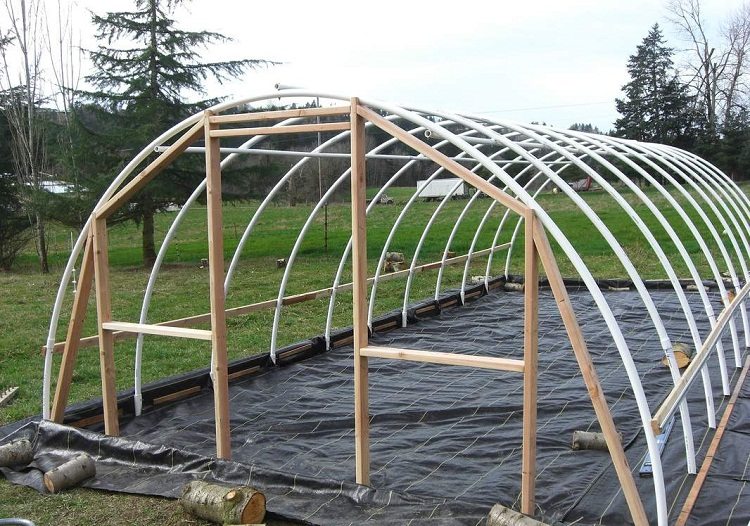
The frame for the polycarbonate greenhouse can be supplemented with wooden elements - for example, for a doorway
Polycarbonate is malleable enough for cutting, but this must be done very carefully. The most even cut is obtained with the help of a clerical knife (with a necessarily new blade). Cut cellular polycarbonate on a flat and clean surface.
The sheets are fastened to the base of PVC pipes using press washers with a size of 3.2 mm by 25 mm. If excess material remains after joining, they can be removed with a clerical knife. The sheets are attached end-to-end to each other, gaps should not appear between them. When installing polycarbonate sheets, the protective film should be at the top (i.e. outdoors). This rule will increase the shelf life of the structure. Polycarbonate honeycombs should always run parallel to the arched fixtures, perpendicular to the ground.
Designing and assembling greenhouses with your own hands from any plastic pipes is an affordable and uncomplicated event. Work does not require much time and financial resources. If you plan to use the greenhouse for several seasons, a simple design with a coating of polyethylene will do, for longer use it is recommended to use polycarbonate sheets.DIY greenhouses made of PVC pipes and polycarbonate can be covered with an awning on very hot days.
